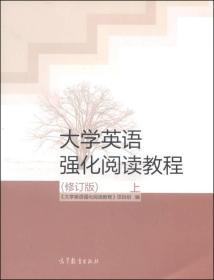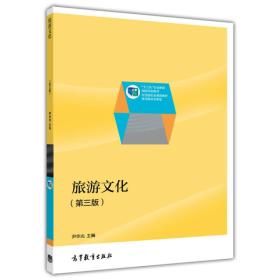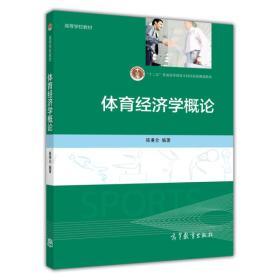
文化视域及翻译策略:《红楼梦》译本的多维研究
¥ 81.26 九品
仅1件
作者周洪亮 著;邱进
出版社西南师范大学出版社
出版时间2011-08
版次1
装帧平装
货号A8
上书时间2024-12-02
- 在售商品 暂无
- 平均发货时间 15小时
- 好评率 暂无
- 最新上架
商品详情
- 品相描述:九品
图书标准信息
- 作者 周洪亮 著;邱进
- 出版社 西南师范大学出版社
- 出版时间 2011-08
- 版次 1
- ISBN 9787562154259
- 定价 48.00元
- 装帧 平装
- 开本 16开
- 纸张 胶版纸
- 页数 476页
- 字数 495千字
- 【内容简介】
- This book is composed of three major parts (17 chaptersaltogether)as follows:Part One focuses on translation and culture,including chapters 1-10 which conduct the contrastive study of theYangs’ and Hawkes’ versions (A Dream of Red Mansions and The Storyof the Stone respectively);Part Two discusses the Yangs’ versionfrom the sociosemiotic and stylistic approaches,covering chapters11-15 which deal with the Yangs’ version, A Dream of Red Mansions;Part Three covers chapters 16-17 which make an attempt to analyzeHawkes’ version, The Story of the Stone from Hermeneutics and therewriting theory respectively.
- 【目录】
-
Part One Translation and Culture:Contrastive Study on the Yangs'and Hawkes' Versions
Chapter One Introduction 3
1.1 Hongloumeng and Its English Translation
1.2 The Research Questions 9
1.3 The Format of This Book 11
Chapter Two Literature Review 14
2.1 Previous Researches into the Translation of Hongloumeng14
2.2 The Functional Approach of Translation Study 17
2.3 Previous Researches of Functionalism in Literary Translation25
Chapter Three Research Methodology 28
3.1 A Sketchy View on the Action Theory 28
3.2 The Functionalist Translation Theory 31
3.3 Peter Newmark's Semantic Translation and CommunicativeTranslation 56
3.4 Language, Culture and Translation Strategy from a CulturalStudies Perspective 59
3.5 The Validity of the Theories Applied to This Study 68
Chapter Four Contrastive Study of the Translation ofCulture-Specific Elements in the Two Versions 71
4.1 Introduction 71
4.2 Different Roles and Functions in the Translational Actions ofHongloumeng 72
4.3 Different Translation Briefs and Skoposi of the Two Versions73
4.4 Contrastive Study of the Translation of Culture--SpecificElements of the Two Versions 82
Chapter Five Optimal Balance between the Two TranslationStrategies:Foreignization vs. Domestication 139
5.1 The Yangs' Main Translation Methods Underpinned by TheirTranslationStrategy 139
5.2 Hawkes' Main Translation Methods Based on His TranslationStrategy 140
5.3 Appropriate Degree of Foreignization and Domestication in theTwo Versions 142
5.4 Major Findings 154
Appendix: 《红楼梦》两种英译本异化与归化的调查问卷 163
Chapter Six Poetry Translation in Hongloumeng 173
6.1 Poetry Translation 173
6.2 Poetry in Hongloumeng 178
6.3 Functionalist Approach to Poetry Translation in Hongloumeng181
6.4 Other Factors Affecting the Translator's Choice of TranslationStrategy 212
Chapter Seven Translation of Lantern Riddles in Hongloumeng217
7.1 Introduction 217
7.2 Lantern Riddles in Hongloumeng 218
7.3 A General Notion of the Translator's Subjectivity 223
7.4 A Contrastive Study on Lantern Riddles Translation from thePerspective of the Translator's Subjectivity 233
7.5 Further Discussion about the Translator's Subjectivity253
Chapter Eight Translation of Two--Part Allegorical Sayings inHongloumeng 255
8.1 Introduction 255
8.2 Description of Two--Part Allegorical Sayings 256
8.3 Nida's Equivalence Theory 258
8.4 Translation Methods Adopted in the Two Versions 261
8.5 Approaches to Image--Rendering 267
Chapter Nine Translation of Cultural Default in Hongloumeng270
9.1 Cultural Default 270
9.2 Analysis of Cultural Default in Hongloumeng 275
9.3 Translation of Cultural Default in Hongloumeng 282
Chapter Ten The Impact of the Translator's Hybrid Cultural Identityon Cultural Translation of Hongloumeng 303
10.1 Introduction 303
10.2 The Hybridity of Cultural Identity 304
10.3 The Hybridity of Cultural Identity of Hongloumeng Translators313
10.4 The Hybridity of Cultural Identity and Manipulation ofCultural Informa-
tion in Hongloumeng Translation 315
Part Two Soeiosemioties and Stylistics:The Study on A Dream of RedMansions
Chapter Eleven Translation of Color Terms in A Dream of RedMansions 329
11.1 Introduction 329
11.2 Translatability and Untranslatability of Color Terms330
11.3 The Categorization of Color Terms in Hongloumeng 333
11.4 Color Images in Hongloumeng 335
11.5 Translation Principles of Color Terms and Color Images inHongloumeng 343
Chapter Twelve Translation of Fuzzy Expressions in A Dream of RedMansions 349
12.1 Introduction 349
12.2 The Notion of Fuzzy Equivalence 350
12.3 Translation of Fuzzy Metaphorical Expressions in Hongloumeng352
12.4 Translation of Fuzzy Numerals in Hongloumeng 356
12.5 Translation of Fuzzy Animal Words in Hongloumeng 360
Chapter Thirteen Translation of Metonymy in A Dream of Red Mansions364
13.1 Brief Description of Metonymy 364
13.2 Metonymy, Culture and Translation 368
13.3 Comparisons between Chinese and English Metonymy Models369
13.4 Translation Methods of Metonymy in A Dream of Red Mansions371
Chapter Fourteen Sociosemiotic Study ofA Dream of Red Mansions380
14.1 The Sociosemiotic Approach to Translation Studies 380
14.2 Analysis of the Yangs' Version from.the SociosemioticPerspective 385
Chapter Fifteen A Stylistic Study of A Dream of Red Mansions404
15.1 Introduction to Literary Stylistics 405
15.2 Narration 407
15.3 Conversation 415
15.4 Chapter Titles 422
Part Three Hermeneutics and Rewriting:The Study on The Story ofthe Stone
Chapter Sixteen The Study on The Story of the Stone from aHermeneutic Perspective 431
16.1 Introduction 431
16.2 Gadamer's Hermeneutic Theory 432
16.3 The Hermeneutic Approach of The Story of the Stone 438
Chapter Seventeen Allusion Translation in The Story of the Stonefrom the Approach of Rewriting Theory 448
17.1 Introduction 448
17.2 Allusions in Hongloumeng 449
17.3 Andr6 Lefevere's Rewriting Theory 455
17.4 Theoretical Analysis on Allusion Translation in The Story ofthe Stone 461
REFERENCES 467
LIST OF ABBREVIATIONS 475CKNOWLEDGEMENTS 476
相关推荐
-

文化视域及翻译策略:《红楼梦》译本的多维研究
九五品廊坊
¥ 86.63
-

文化视域及翻译策略:《红楼梦》译本的多维研究
九五品廊坊
¥ 80.67
-

文化视域及翻译策略:《红楼梦》译本的多维研究
九五品廊坊
¥ 97.00
-

文化视域及翻译策略:《红楼梦》译本的多维研究
八品重庆
¥ 14.00
-

文化视域及翻译策略:《红楼梦》译本的多维研究
八品重庆
¥ 12.50
-

文化视域及翻译策略:《红楼梦》译本的多维研究
九品廊坊
¥ 14.50
-

文化视域及翻译策略:《红楼梦》译本的多维研究
八品重庆
¥ 15.00
-

文化视域及翻译策略:《红楼梦》译本的多维研究
八品重庆
¥ 8.86
-

文化视域及翻译策略:《红楼梦》译本的多维研究
九品佛山
¥ 14.20
-

文化视域及翻译策略:《红楼梦》译本的多维研究
八品重庆
¥ 12.10
— 没有更多了 —













以下为对购买帮助不大的评价